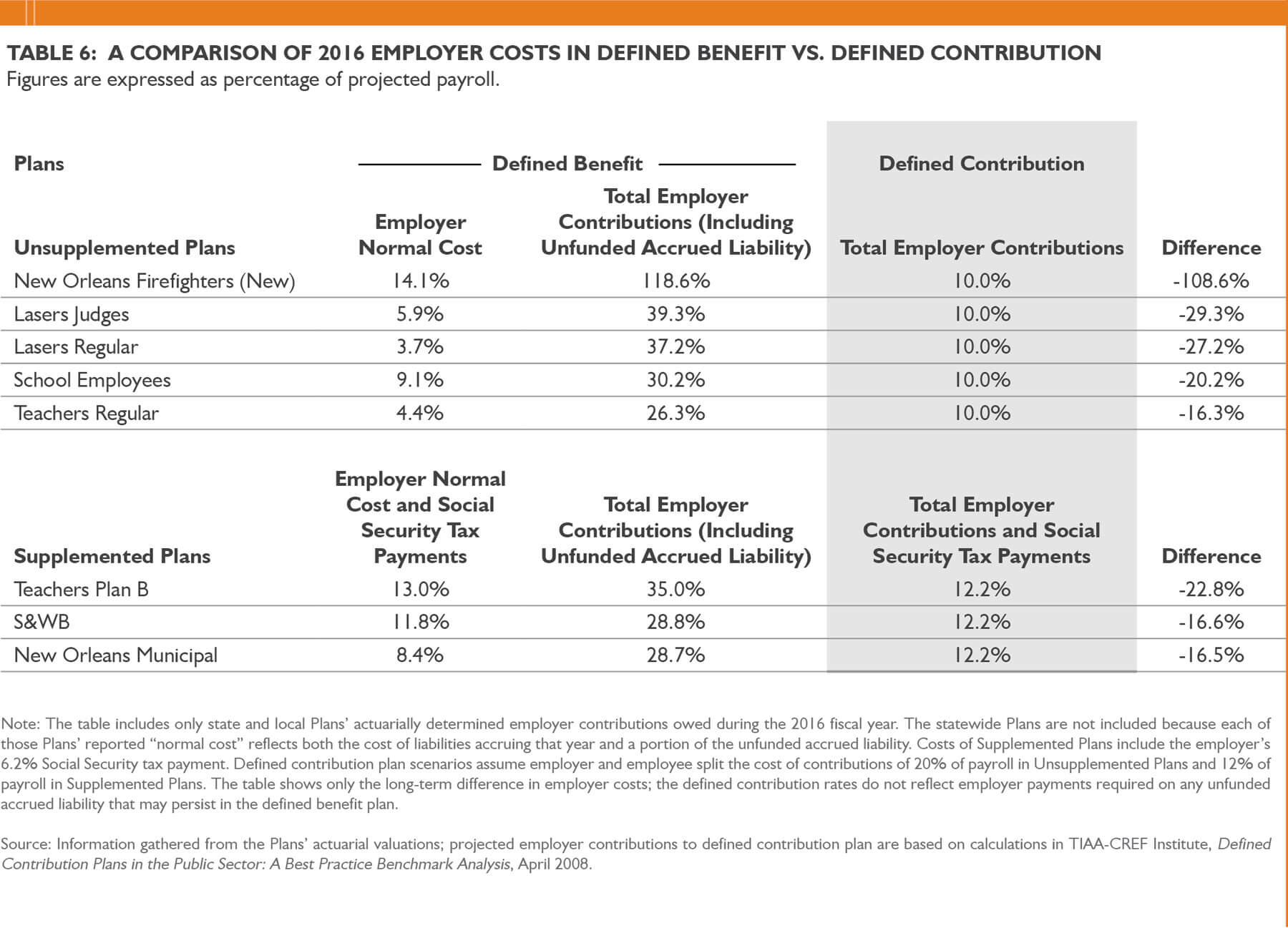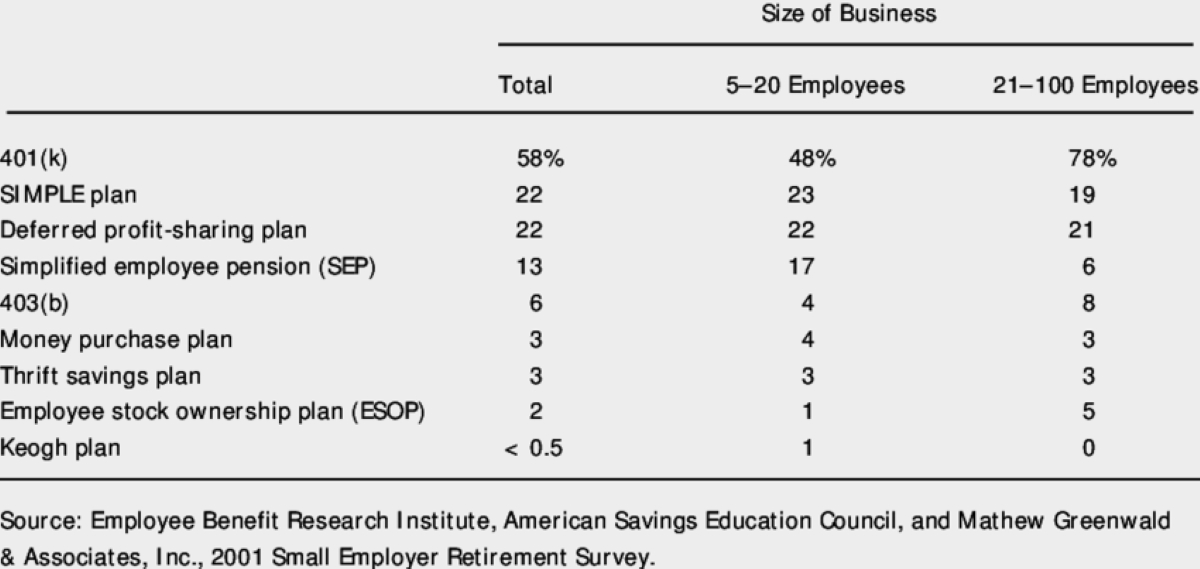Home>Finance>What Is Defined Contribution Plans (Annual Additions Limit)


Finance
What Is Defined Contribution Plans (Annual Additions Limit)
Published: January 2, 2024
Learn about defined contribution plans and their annual additions limit in the world of finance. Understand how these plans can help you secure your financial future.
(Many of the links in this article redirect to a specific reviewed product. Your purchase of these products through affiliate links helps to generate commission for LiveWell, at no extra cost. Learn more)
Table of Contents
- Introduction
- What Are Defined Contribution Plans?
- Understanding Annual Additions Limit
- How Is the Annual Additions Limit Determined?
- Contribution Limits for Different Types of Defined Contribution Plans
- Importance of Monitoring Annual Additions Limit
- Strategies for Maximizing Contributions within Annual Additions Limit
- Factors That Affect Annual Additions Limit
- Consequences of Exceeding Annual Additions Limit
- Ways to Handle Excess Contributions
- Conclusion
Introduction
Defined Contribution Plans, also known as DC plans, have become increasingly popular among individuals and employers as a way to save for retirement. These plans, such as 401(k), 403(b), and individual retirement accounts (IRAs), offer a range of benefits, including tax advantages and flexibility in investment choices. However, it is crucial to understand the limitations and regulations associated with these plans to ensure maximum benefit.
One important aspect of defined contribution plans that individuals should be aware of is the annual additions limit. This limit sets a maximum cap on the amount of money that can be contributed to the plan within a single calendar year. Understanding and adhering to this limit is essential to avoid tax penalties and ensure the continued growth of funds towards retirement.
In this article, we will delve into the concept of defined contribution plans and explore the details of the annual additions limit. We will discuss how this limit is determined, the contribution limits for different types of plans, and the importance of monitoring and maximizing contributions within the limit. Additionally, we will explore the factors that can affect the annual additions limit and the consequences of exceeding it. Finally, we will provide strategies for handling excess contributions and summarize the key takeaways.
What Are Defined Contribution Plans?
Defined Contribution Plans are retirement savings plans that allow employees and individuals to contribute a portion of their earnings into an investment account. These plans differ from traditional pension plans, where the employer bears the investment risk and guarantees a fixed benefit upon retirement. In defined contribution plans, the account balance is determined by the contributions made and the investment performance of the underlying assets.
One of the most commonly known types of defined contribution plans is the 401(k) plan. Offered by employers, a 401(k) allows employees to contribute a portion of their pre-tax income, which grows tax-deferred until withdrawal during retirement. Employers may also offer a matching contribution, where they contribute a certain percentage of the employee’s salary into the plan, typically up to a specified limit.
Another type of defined contribution plan is the 403(b) plan, primarily offered by educational institutions, nonprofit organizations, and certain government entities. Similar to the 401(k) plan, the 403(b) plan allows employees to contribute a portion of their salary, with potential employer matching contributions.
In addition to employer-sponsored plans, individuals can also save for retirement through individual retirement accounts (IRAs). These accounts are established by individuals and offer tax advantages for retirement savings. Traditional IRAs allow for pre-tax contributions, meaning contributions are tax-deductible in the year they are made, while Roth IRAs allow for after-tax contributions, with qualified withdrawals being tax-free.
Defined contribution plans provide individuals with greater control over their retirement savings. Participants can choose from various investment options, such as stocks, bonds, mutual funds, and target-date funds, based on their risk tolerance and investment goals. The accumulated funds can be used to generate income during retirement or be left to grow for future financial needs.
It is important to note that contributions to defined contribution plans are subject to certain limits, including the annual additions limit. Understanding these limits and the rules associated with these plans is crucial to optimize savings and secure a comfortable retirement.
Understanding Annual Additions Limit
The annual additions limit is a key component of defined contribution plans that individuals and employers must understand to effectively manage their retirement savings. It sets a maximum cap on the combined amount of contributions made to the plan in a given calendar year. The limit includes both employee contributions and employer contributions, such as matching contributions or profit-sharing contributions.
The Internal Revenue Service (IRS) sets the annual additions limit to prevent excessive contributions and ensure fairness among participants. The limit helps to maintain the tax-favored status of these retirement savings plans and prevent high-income individuals from disproportionately benefiting from the tax advantages offered.
The annual additions limit applies to various types of defined contribution plans, including 401(k) plans, 403(b) plans, and IRAs. However, the specific limits can vary depending on the type of plan and the individual’s circumstances.
For the current tax year, the annual additions limit for 401(k) plans is $19,500 for individuals under the age of 50. For individuals aged 50 and above, an additional catch-up contribution of $6,500 is allowed, bringing the total limit to $26,000. The annual additions limit for 403(b) plans follows the same limits as 401(k) plans.
IRAs, on the other hand, have separate annual contribution limits. For the current tax year, the annual contribution limit for traditional and Roth IRAs is $6,000 for individuals under the age of 50. Individuals aged 50 and above can make an additional catch-up contribution of $1,000, making their total limit $7,000.
It is important to note that the annual additions limit is subject to periodic adjustments by the IRS to account for inflation. Therefore, it is essential to stay updated with any changes to remain in compliance with the regulations.
Exceeding the annual additions limit can have serious consequences. Any excess contributions made beyond the limit are considered “excess elective deferrals” and must be corrected by removing the excess amount and any associated earnings. Failure to correct excess contributions can result in taxation of the excess amount as ordinary income and potential penalties.
Understanding the annual additions limit is critical to effectively manage retirement savings within the parameters outlined by the IRS. By staying within the limits, individuals can maximize the tax advantages offered by defined contribution plans and ensure a secure financial future during retirement.
How Is the Annual Additions Limit Determined?
The annual additions limit for defined contribution plans is determined by the Internal Revenue Service (IRS) and is subject to periodic adjustments. The IRS takes into consideration various factors and economic indicators to calculate the limit each year. Understanding how the annual additions limit is determined is crucial for individuals and employers to effectively plan their contributions and stay within the set limits.
The primary factor that influences the annual additions limit is inflation. The IRS uses the Consumer Price Index (CPI) to measure changes in the cost of living and adjust the contribution limits accordingly. If there is a significant increase in the cost of living, the IRS may increase the limits to allow for higher contributions and maintain the purchasing power of saved funds.
In addition to inflation, the IRS may also consider other factors such as changes in the tax code, economic forecasts, and public policy goals when determining the annual additions limit. These factors help ensure that the limits remain equitable and aligned with the current economic and regulatory landscape.
It’s important to note that the annual additions limit can vary depending on the type of defined contribution plan. For example, the limit for 401(k) plans may be different from 403(b) plans or IRAs. Additionally, there may be different limits for individuals based on their age or employment status.
It’s advised to consult the IRS guidelines or a financial advisor to understand the specific annual additions limit that applies to your situation. These resources will provide the most up-to-date information and help ensure compliance with the regulations.
Employers play a significant role in determining the annual additions limit for their employees’ defined contribution plans. While the IRS sets the maximum limit, employers have the flexibility to set lower limits if they choose to do so. Employers must communicate the specific limit to employees and ensure it is applied correctly throughout the year.
Understanding how the annual additions limit is determined allows individuals and employers to make informed decisions regarding their contributions. By staying within the limits set by the IRS and employer, individuals can maximize the benefits of their defined contribution plans and avoid any potential penalties or taxation associated with exceeding the limit.
Contribution Limits for Different Types of Defined Contribution Plans
Contribution limits are an important aspect of defined contribution plans, as they dictate the maximum amount that can be contributed to each type of plan. These limits help individuals and employers plan their savings and ensure compliance with the regulations set by the Internal Revenue Service (IRS).
Let’s take a closer look at the contribution limits for different types of defined contribution plans:
- 401(k) Plans: For the current tax year, the contribution limit for 401(k) plans is $19,500 for individuals under the age of 50. Individuals aged 50 and above can make an additional catch-up contribution of $6,500, bringing their total limit to $26,000. It’s important to note that the employer’s matching contributions do not count towards the individual’s contribution limit.
- 403(b) Plans: Similar to 401(k) plans, the contribution limits for 403(b) plans are also $19,500 for individuals under the age of 50, with an additional catch-up contribution of $6,500 for individuals aged 50 and above.
- 457 Plans: These plans are available to government and certain non-profit employees. The contribution limits for 457 plans follow the same limits as 401(k) and 403(b) plans, with a maximum contribution of $19,500 for individuals under the age of 50 and an additional catch-up contribution of $6,500 for individuals aged 50 and above.
- Individual Retirement Accounts (IRAs): IRAs have separate contribution limits from employer-sponsored plans. For the current tax year, the contribution limit for both traditional and Roth IRAs is $6,000 for individuals under the age of 50. Individuals aged 50 and above can make an additional catch-up contribution of $1,000, bringing their total limit to $7,000.
- Simplified Employee Pension (SEP) IRA: Self-employed individuals and small business owners can establish SEP IRAs. The annual contribution limit for SEP IRAs is based on a percentage of the participant’s self-employment income, up to a maximum of $58,000 (for the current tax year).
- Simple IRA: These plans are designed for small businesses. For the current tax year, the contribution limit for Simple IRAs is $13,500 for individuals under the age of 50, with an additional catch-up contribution of $3,000 for individuals aged 50 and above.
It’s important to keep in mind that these contribution limits are subject to periodic adjustments by the IRS to account for inflation. It’s advisable to consult the IRS guidelines or a financial advisor to ensure compliance with the most up-to-date limits.
Understanding the contribution limits for different types of defined contribution plans empowers individuals and employers to make informed decisions about their savings and contributions. By maximizing contributions within the limits, individuals can work towards building a substantial retirement fund while taking advantage of the tax benefits offered by these plans.
Importance of Monitoring Annual Additions Limit
Monitoring the annual additions limit is crucial for individuals and employers to ensure compliance with the regulations of defined contribution plans. By keeping track of contributions and staying within the set limits, individuals can avoid tax penalties, maximize tax advantages, and effectively plan for their retirement.
Here are some key reasons why monitoring the annual additions limit is important:
- Tax Compliance: Exceeding the annual additions limit can result in tax implications. Any excess contributions made beyond the limit are considered “excess elective deferrals” and must be corrected by removing the excess amount and any associated earnings. Failure to correct excess contributions within a specified timeframe can lead to taxation of the excess amount as ordinary income, subject to additional penalties.
- Maximizing Tax Advantages: Defined contribution plans offer various tax advantages, such as tax-deferred growth or tax-free withdrawals in the case of Roth accounts. By monitoring contributions and staying within the annual additions limit, individuals can leverage these benefits to optimize their retirement savings and potentially reduce their tax liability during retirement.
- Utilizing Employer Matching Contributions: Many employers offer matching contributions to encourage employees to save for retirement. By monitoring and optimizing contributions within the annual additions limit, individuals can take full advantage of the employer match and ensure they receive the maximum benefit offered.
- Effective Retirement Planning: Monitoring the annual additions limit helps individuals keep track of their progress towards their retirement savings goals. By staying within the limit, individuals can allocate their contributions strategically, balancing their current financial needs with long-term retirement planning. Regular monitoring allows for adjustments to optimize savings and ensure progress towards a secure retirement.
- Avoiding Costly Mistakes: Failure to monitor contributions and exceeding the annual additions limit can result in unnecessary costs, such as tax penalties or potential legal fees if corrective actions need to be taken. By proactively monitoring the limit, individuals can prevent errors and avoid costly mistakes that may impact their financial well-being.
It’s important to note that monitoring the annual additions limit is not a one-time task. Contributions throughout the year need to be closely monitored to ensure compliance. Seeking guidance from financial advisors or utilizing online tools that track contributions can assist in effectively monitoring and managing the annual additions limit.
By actively monitoring the annual additions limit, individuals and employers can navigate the complexities of defined contribution plans, optimize their contributions, and safeguard their retirement savings for a financially secure future.
Strategies for Maximizing Contributions within Annual Additions Limit
Maximizing contributions within the annual additions limit is a smart approach to building a substantial retirement nest egg. By utilizing effective strategies, individuals can optimize their savings and take advantage of the tax benefits offered by defined contribution plans. Here are some strategies to consider:
- Take Advantage of Employer Matching: If your employer offers a matching contribution, aim to contribute enough to receive the maximum match. Employer matching is essentially free money that can significantly boost your retirement savings.
- Consider Catch-Up Contributions: If you are 50 years old or older, take advantage of catch-up contributions. For 401(k), 403(b), and 457 plans, individuals can contribute an additional $6,500 above the regular annual limit. For IRAs, the catch-up contribution is $1,000.
- Schedule Regular Contributions: Set up automatic contributions from your paycheck or bank account to ensure consistent savings. By making regular contributions, you can take advantage of dollar-cost averaging, potentially buying more shares when prices are lower and fewer shares when prices are higher.
- Explore Deferred Compensation Plans: Some employers offer deferred compensation plans, allowing employees to defer a portion of their compensation until retirement. These plans can provide an additional avenue to save for retirement while potentially reducing current taxable income.
- Maximize Contributions Early in the Year: If you have the financial means, aim to front-load your contributions at the beginning of the year. By doing so, you give your investments more time to grow, potentially maximizing the compound interest effect.
- Consider Roth Contributions: Depending on your financial circumstances and retirement goals, consider making Roth contributions to your defined contribution plans or IRAs. While Roth contributions are made with after-tax dollars, qualified withdrawals are tax-free in retirement, offering potential tax diversification and flexibility.
- Review Tax Implications: Understand the tax implications of contributions and withdrawals from different retirement accounts. For example, traditional IRA contributions are tax-deductible, but withdrawals during retirement are generally subject to ordinary income tax. By considering the tax implications, you can make informed decisions on where to allocate your contributions.
- Seek Professional Guidance: If you’re uncertain about the best strategies for maximizing contributions within the annual additions limit, consult with a certified financial planner or tax advisor. They can provide personalized guidance based on your individual circumstances and help optimize your retirement savings strategy.
Remember, it’s essential to monitor your contributions throughout the year to ensure you don’t exceed the annual additions limit. Regularly reviewing your contributions and adjusting them in line with your financial goals can help you make the most of your defined contribution plans while staying within the regulatory limits.
By implementing these strategies, you can make significant progress towards building a robust retirement fund and ensure a financially secure future.
Factors That Affect Annual Additions Limit
The annual additions limit for defined contribution plans, such as 401(k) plans and IRAs, is influenced by various factors. Understanding these factors is essential for individuals and employers to effectively plan and manage contributions within the set limits. Here are some key factors that can affect the annual additions limit:
- Inflation: Inflation plays a significant role in determining the annual additions limit. The Internal Revenue Service (IRS) considers the impact of inflation on the cost of living when setting the limit. If there is a significant increase in the cost of living, the IRS may adjust the limit to account for this inflationary effect.
- Tax Code Changes: Changes in the tax code can have an impact on the annual additions limit. Legislation passed by Congress can result in adjustments to the limit to align with the updated tax regulations and goals of promoting retirement savings.
- Economic Conditions: Economic conditions and forecasts can influence the annual additions limit. The IRS may take into account economic indicators and projections when determining the limit. Factors such as GDP growth, employment rates, and market performance may be considered in setting the limit.
- Public Policy Objectives: Public policy objectives related to retirement savings can influence the annual additions limit. The government may aim to encourage retirement preparedness or promote equal access to retirement savings opportunities. As a result, the annual additions limit may be adjusted to align with these policy objectives.
- Employee Compensation: The amount of annual compensation an individual receives can impact the annual additions limit. Certain formula-based contributions, such as employer matching contributions or profit-sharing contributions, may be tied to an individual’s compensation level. Therefore, changes in an individual’s compensation can influence the overall limit.
- Type of Defined Contribution Plan: Different types of defined contribution plans can have varying contribution limits. For example, 401(k) plans may have different limits compared to 403(b) plans or IRAs. Employers offering these plans have the flexibility to set lower limits if desired, but they must adhere to the minimum limits set by the IRS.
- Age-based Limits: Some defined contribution plans have age-based contribution limits, known as catch-up contributions, allowing individuals aged 50 and above to contribute more than the regular annual limit. These catch-up contributions provide an opportunity for older individuals to make additional savings as they approach retirement.
It’s important to note that these factors can vary year to year, and the limits set by the IRS are subject to periodic adjustments. Staying informed about any changes to the annual additions limit ensures compliance with the latest regulations.
Understanding the factors that influence the annual additions limit enables individuals and employers to make informed decisions and effectively plan their contributions to defined contribution plans. By staying within the set limits, individuals can maximize the benefits and tax advantages offered by these plans while securing their financial future in retirement.
Consequences of Exceeding Annual Additions Limit
Exceeding the annual additions limit for defined contribution plans can have significant consequences for individuals. The Internal Revenue Service (IRS) imposes penalties and tax implications to maintain the integrity and tax-favored status of these retirement savings plans. It’s crucial to understand the consequences of exceeding the limit and take appropriate action if it occurs.
Here are some of the consequences that individuals may face when they exceed the annual additions limit:
- Taxation of Excess Contributions: Any contributions made beyond the annual limit are considered “excess elective deferrals” and must be corrected. If not corrected in a timely manner, the excess contributions are subject to taxation as ordinary income in the year they were made.
- Penalties: In addition to being subject to income tax on the excess contributions, individuals may also face penalties. The IRS imposes an excise tax of 6% on excess contributions that are not removed or corrected by the due date of the individual’s tax return, including extensions.
- Double Taxation: Excess contributions that are not corrected in a timely manner may be subject to double taxation. This occurs when the excess amount is taxed as income in the year it was contributed and then taxed again when it is withdrawn during retirement.
- Loss of Tax-Advantaged Growth: Excess contributions are not eligible for tax-advantaged growth. These excess amounts, along with any related earnings they have generated, must be removed from the account. As a result, individuals miss out on potential tax-free or tax-deferred growth on those excess funds.
- Corrective Actions: To address the issue of exceeding the annual additions limit, individuals must take corrective actions. This may involve withdrawing the excess contributions and any attributable earnings from the account to ensure compliance with the regulations. It’s important to consult with a financial advisor or tax professional to navigate the complex procedures involved in correcting excess contributions.
It’s essential to be proactive if you realize that you’ve exceeded the annual additions limit. Taking prompt corrective actions can mitigate the severity of the consequences and help you avoid additional penalties. The IRS provides specific guidelines and procedures for correcting excess contributions, and seeking professional guidance is advisable in such situations.
By staying within the annual additions limit, individuals can avoid the negative consequences associated with exceeding the limit and ensure compliance with the rules established by the IRS. Monitoring contributions throughout the year and understanding the regulations surrounding these limits are key to safeguarding your retirement savings and optimizing the benefits of defined contribution plans.
Ways to Handle Excess Contributions
If you find that you have exceeded the annual additions limit for your defined contribution plan, it is important to take prompt action to rectify the situation. Here are several options for handling excess contributions:
- Remove Excess Contributions: One option is to remove the excess contributions and any associated earnings from your account. This ensures that you are in compliance with the annual additions limit. You must make the removal before the tax filing deadline for the year in which the excess contributions were made, including any extensions.
- Withdraw Excess Earnings: In addition to removing the excess contributions, you may be required to withdraw any earnings that have been generated from those excess contributions. These earnings are considered part of the excess amount and are subject to taxation as ordinary income.
- Recharacterize Contributions: In some cases, you may have the option to recharacterize the excess contributions as contributions to a different type of account. For example, if you have excess contributions in a traditional IRA, you may be able to recharacterize them as contributions to a Roth IRA. Recharacterization helps to align your contributions within the allowable limits and may have favorable tax implications.
- Amend Your Tax Return: If you discover the excess contributions after filing your tax return, you may need to amend your tax return to reflect the correction. The amended return will account for the removal of the excess contributions and any adjustments to your taxable income.
- Potential Penalty Relief: If you have made excess contributions due to an administrative or logistical error by your employer or plan administrator, you may be eligible for penalty relief. In such cases, you can provide documentation that demonstrates the error and work with the IRS to rectify the situation without incurring penalties.
- Seek Professional Guidance: Handling excess contributions can be complex, and it’s advisable to consult with a financial advisor or a tax professional. They can provide personalized guidance based on your specific situation and help you navigate the process of correcting excess contributions effectively.
It is essential to take action promptly to correct excess contributions to avoid further penalties and potential double taxation. Working with a professional can ensure that you follow the correct procedures and comply with IRS guidelines.
Remember, it’s important to stay vigilant and monitor your contributions throughout the year to avoid exceeding the annual additions limit in the first place. By staying within the limits, you can maximize the tax advantages of your defined contribution plan and build a solid foundation for your retirement savings.
Conclusion
Understanding and effectively managing the annual additions limit is crucial for individuals and employers participating in defined contribution plans. By staying within the set limits, individuals can optimize their retirement savings while avoiding tax penalties and potential consequences.
Defined contribution plans, such as 401(k) plans, 403(b) plans, and IRAs, offer valuable tax advantages and flexibility in investment options. However, exceeding the annual additions limit can have serious implications. It can result in excess contributions being subject to taxation, penalties, and the loss of tax-advantaged growth.
To ensure compliance with the annual additions limit, individuals should monitor their contributions throughout the year and consider strategies to maximize savings within the set limits. Taking advantage of employer matching contributions, exploring catch-up contributions for individuals aged 50 and above, and regular monitoring of contributions are essential practices.
If an individual exceeds the annual additions limit, prompt action must be taken to correct the excess contributions. Options include removing the excess contributions, withdrawing any associated earnings, recharacterizing contributions, or amending tax returns if necessary.
It is wise to seek professional guidance from financial advisors or tax professionals when managing defined contribution plans and handling excess contributions. They can provide personalized advice based on individual circumstances and help navigate the complexities of regulations and procedures.
In conclusion, understanding the annual additions limit, monitoring contributions, and adhering to the regulations of defined contribution plans are fundamental to maximize retirement savings and enjoy the benefits offered by these plans. By effectively managing contributions within the annual additions limit, individuals can work towards a secure and financially stable retirement.














